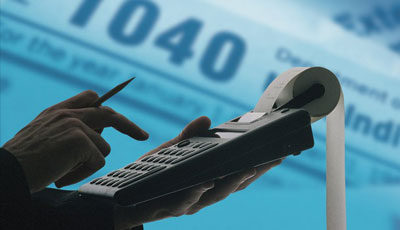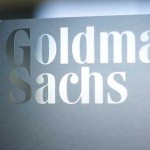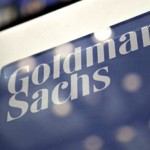Goldman Sachs Brings Forward Rate Forecast as Treasuries Drop

Goldman Sachs Group Inc. brought forward its forecast for the Federal Reserve to raise interest rates after U.S. employers added more jobs than forecast, sending five-year Treasuries lower for a fourth day.
The Fed will increase its benchmark in the third quarter of 2015, rather than the first three months of 2016, Goldman Sachs Chief Economist Jan Hatzius wrote in a report yesterday. The investment bank joins companies including JPMorgan Chase & Co. and Bank of Tokyo-Mitsubishi UFJ Ltd. in moving up its Fed estimates after U.S. data last week showed the economy added 288,000 workers in June, compared with the 215,000 projected by a Bloomberg News survey of analysts.
“We might see more U.S. banks bringing forward their rate-hike expectations this week,” said Piet Lammens, head of research at KBC Bank NV in Brussels. “It was an important jobs report. It may be that we get more losses for Treasuries and higher yields today.”
The U.S. five-year yield climbed two basis points, or 0.02 percentage point, to 1.75 percent at 6:49 a.m. New York time, according to Bloomberg Bond Trader prices. The 1.63 percent note maturing in June 2019 dropped 3/32, or 94 cents per $1,000 face amount, to 99 13/32.
The two-year yield rose one basis point to 0.52 percent and the 10-year yield was little changed at 2.64 percent after rising 10 basis points last week.
Spread Widens
“The U.S. is beyond its crisis,” said Hans Kunnen, a senior economist at St. George Bank Ltd. in Sydney. “It has created lots of jobs. There are a lot of things happening in there that are positive, and that tends to come with higher interest rates.”
The 10-year yield will increase to 2.85 percent by year-end, Kunnen said.
The extra yield that 10-year Treasuries offer over their Group-of-Seven counterparts expanded one basis point to 74 basis points, the most since April 2010. Treasuries resumed trading today after being closed worldwide for a public holiday in the U.S.
Policy makers have kept their target for overnight lending between banks in a range of zero to 0.25 percent since December 2008. The central bank will publish the minutes of its June 17-18 meeting on July 9.
Traders see about a 72 percent chance officials will raise the key rate from near zero by September 2015, fed funds futures show. That’s up from 56 percent at the end of May.
U.S. Sales
This week’s U.S. note and bond sales will consist of $27 billion of three-year Treasuries tomorrow, $21 billion of 10-year notes on July 9 and $13 billion of 30-year securities on July 10.
The U.S. is recovering after contracting at a rate of as much as 8.3 percent at the worst of the recession that began in December 2007 and ended in June 2009.
“We remain quite confident that the U.S. economy is accelerating to an above-trend pace,” Hatzius, who is based in New York, wrote in his report. “The acceleration is most visible in the labor market. The inflation numbers have also surprised on the upside over the past few months.”
Chris Rupkey, chief financial economist at Bank of Tokyo-Mitsubishi UFJ in New York, said last week he expected the first rate increase in March instead of June. JPMorgan Chase Chief U.S. Economist Michael Feroli brought forward his forecast last week by one quarter to the third quarter of 2015.
Goldman Sachs and JPMorgan are two of the 22 primary dealers that trade directly with the Fed.
Employment Report
Hajime Nagata, a money manager at Diam Co. in Tokyo says average hourly earnings in the employment report were in check, which will help cap inflation. Earnings increased 2 percent in June from the year before, versus 2.7 percent five years earlier.
“The labor market is improving” Nagata said. “But I’m not sure this number will have an impact on the Fed. Hourly earnings are not picking up.”
Ten-year yields will be in a range of 2.40 percent to 2.85 percent for the rest of the year, he said. Diam manages the equivalent of $137.7 billion.
The difference between yields on 10-year notes and similar-maturity Treasury Inflation Protected Securities, a gauge of trader expectations for consumer prices over the life of the debt, widened to as much as 2.29 percentage points last week, the most since Jan. 10. The rate, which was at 2.26 percentage points today, has averaged 2.2 percentage points during the past decade.
The Bloomberg U.S. Treasury Bond Index (BUSY) dropped 0.15 percent in the month ended July 4. The Bloomberg Global Developed Sovereign Bond Index (BGSV) gained 0.8 percent, reflecting trader expectations for Europe and Japan to keep borrowing costs at record lows.
Source: bloomberg




























